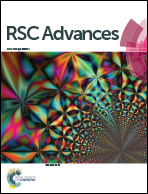Preparation of a novel molecularly imprinted polymer by the sol–gel process for solid phase extraction of vitamin D3
Abstract
A novel molecularly imprinted polymer (MIP) as an artificial receptor for vitamin D3 is prepared and used. A sol–gel process is used to prepare the hybrid MIP. For the organic part (gel) of the MIP, methacrylic acid (MAA), ethylene glycol dimethacrylate (EGDMA) and benzoylperoxide are used as functional monomer, cross-liker and initializer, respectively. As the inorganic part (sol) of the MIP, tetraethyl orthosilicate (TEOS) is used. The main parameters affecting the synthesis of the organic–inorganic hybrid MIP are investigated and optimized. The imprinting efficiency of the MIP is evaluated by comparing the adsorbed amount of vitamin D3 by the MIP with that by the related non-imprinted polymer (NIP). Betamethasone, dexamethasone, 17-beta-stradiol and 25-hydroxy vitamin D3 were chosen to study the selectivity of the MIP. This study revealed that the MIP possesses a remarkable affinity for vitamin D3. A limit of detection of 1 ng mL−1 has been achieved. The linear range and relative standard deviation (RSD%) were 1–10 000 ng mL−1 and 4 (n = 3), respectively. The hybrid MIP provides fast, selective and convenient separation of vitamin D3 from aqueous samples.


 Please wait while we load your content...
Please wait while we load your content...